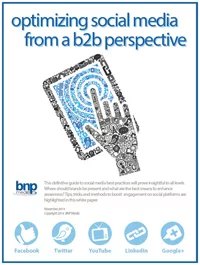Product-Development Software Key to Optimizing Your M & A Investment
It takes discipline and focus to analyze where to take costs out of the combined businesses. In the coatings industry, most companies have a good feel for what the cost reduction opportunities are in operations and manufacturing. But when it gets to other areas there is less sophistication. For instance, there is a huge opportunity to grow profits and market share through new efficiencies in product development.
Effective Information Management: The Key to Success
Clear visibility into the product development process is key to the success of a coatings company, both during an M&A and in dealing with other core business challenges such as supply-chain management. Extremely information-intensive, the product development process, by its nature, also involves a wide cross-section of people from various parts of the organization who need access to product development data, and affect its flow through the organization. The challenge is to integrate these separate R&D-driven activities into a cohesive, enterprise-wide whole, which enables the merged company to quickly rationalize its product line and supply chain, while driving the creation of new, environmentally friendly and competitively priced products customers want.
R&D: Creating Value
The importance of effectively integrating separate R&D activities and maintaining the synergies of an expanded product development organization cannot be overemphasized. Product development organizations within coatings companies are the caretakers of a vast intellectual knowledge store. Even modest-sized coatings manufacturers may have thousands of existing formulas and approved ingredients. In the case of an acquisition, this knowledge is spread across different functional groups, labs and legacy systems. Additionally, the knowledge may be kept in difficult-to-access notebooks, paper files or isolated personal computers. This product knowledge and the business process that creates it, drives or supports many other core business processes such as supply-chain management, material resource planning, procurement and customer support. Coatings companies, to quickly maximize return on an investment in a new acquisition, must actively and consistently manage the integration of this knowledge from the acquired company.
R&D Integration: A Two-Phase Approach
Two aspects of R&D integration must be addressed. First, companies must merge organizations with different business processes, cultures and technologies. That is, they must develop a common business process that provides standardization across the newly merged organizations while facilitating continued product development. The event is an opportunity to make systemic improvements in the product development process. In his book Business @ the Speed of Thought, Microsoft CEO Bill Gates highlights the importance of process when he writes, “Redesign processes to deliver optimal information flow and you will solve your important business problems.… A lousy process will consume 10 times as many hours as the work itself requires. A good process will eliminate the wasted time; technology will speed up the remaining work.”The second key to successful integration involves information technology. In conjunction with process improvement and standardization, companies must invest in proven, targeted information technology (IT) systems and software solutions that support the redesigned product development process. These systems ensure efficient handling of information and provide functionality to facilitate the remaining “real work.”
It is no surprise that IT is a key contributor to realizing value from an acquisition. It underlies and drives many mission-critical business processes. Integrating two disparate IT systems, without disrupting these processes, is one of the most expensive and time-consuming aspects of an M&A. For product development organizations, the challenge is particularly daunting. As an R&D organization works to streamline regimens, standardize protocols and create common, enterprise-wide work processes, a scalable and adaptable software solution is required to enable success. In addition to aiding the integration of two R&D organizations, such a system helps Product Development to communicate crucial data to other business functions.
Information Technology: Unlocking the True Potential
One technology tool helping coatings companies address the challenge of meeting their post-integration product development information management needs is Optiva™, an enterprise-wide product development software suite from Formation Systems, Westborough, MA. Optiva’s benefits, during a merger, include a common product data repository, tools to help identify rationalization opportunities, global access to information, stronger links to marketing and manufacturing, standardization of work processes and approvals, and improved collaboration. The combination of these benefits results in a more effective business process, an example of which is provided in the following scenario.Worldwide Coatings has completed the acquisition of Global Paints. The formulation and raw material records of each company were imported to Global’s Optiva system that provides a centralized, scalable, common repository for all formulations, product specifications, processing instructions and ingredients. Cross-reference of codes for common ingredients and key properties were established and configured into the system.
Next, Worldwide’s Marketing & Sales group identified a number of rationalized product “profiles” based on the combined strengths of the merged companies. The profiles, which include target properties and performance attributes (e.g., end use, cost, selling location, durability) are recorded in Optiva. Product developers evaluate the targets and create measurable product specifications. Since this is all stored in the centralized database, developers can search for all formulas that exist and satisfy the marketing profile requirements. The product development chemist is able to review all the data generated and stored, such as performance test data, stability information, and regulatory and compliance requirements.
As formulations meeting the criteria are identified, Optiva’s functionality lets product developers make side-by-side comparisons of composition and properties. With a centralized, searchable product database, this task is accomplished in a timely, cost-effective way. Without it, the information needed is simply too difficult to manage efficiently. Duplicate formulas and ingredients can be rapidly identified and eliminated, removing them from the supply chain. By contributing to a rapid streamlining of the supply chain, savings are realized more quickly.
Final candidate formulas for the new product profiles can be edited and revised easily. With cross-references available, formulations that originated with Specialty Coatings can be easily converted to use Global’s ingredient codes. The new formulations retain a link to the originals for historical reference. The formulas can be routed using Optiva functions for review and approval. The software supports automated notification of key staff and permits collaborative development. Also, upon final approval, the Optiva interface with enterprise resource planning (ERP) systems will ensure that formulas are accurately and efficiently sent to the ERP system for materials requirement planning (MRP) to be executed and bill of materials generated.
In addition to the processing and manipulation of information, Global’s system has helped to combine corporate R&D cultures while creating common, easy-to-comply-with work processes. The review and approval functions in Optiva allow R&D, manufacturing, and marketing departments to retrieve and update (subject to security and privilege) the same information. Communication is based on consistent access to the same information.
As a result, formula approvals are quicker and compliance with standard enterprise-wide practices is easier. When local variations are required, the link to “master” formulations and product specification are retained to ensure compliance with the marketing profile. The system, too, as it manages and executes these workflow processes, provides an audit trail to support enterprise-wide quality initiatives such as ISO certification.
Mergers and Acquisitions: Fulfilling the Vision
Visionary companies, seeking to tap the full value of an M&A, must recognize one inescapable fact: They can’t do it without advanced information technology applications. Software systems help merging companies gain a strong competitive position by facilitating the creation of a streamlined, global product development process.Laboratory work focuses on adding value and there is less wasted effort. R&D staff can focus on, and more efficiently meet, the challenge of creating products rather than struggling to find information. For the merging or recently merged organization, this is crucial. Maximizing the talents of R&D staff and fully leveraging the value of existing R&D knowledge is essential for any organization. During a merger, given the intense pressure to justify and recoup a large investment, this is even more crucial.
For more information on product-development software, contact Formation Systems, address; call 508/898.1898; visit www.
formationsystems.com; e-mail wyatt.mills@ formationsystems.com.
Links
Looking for a reprint of this article?
From high-res PDFs to custom plaques, order your copy today!







